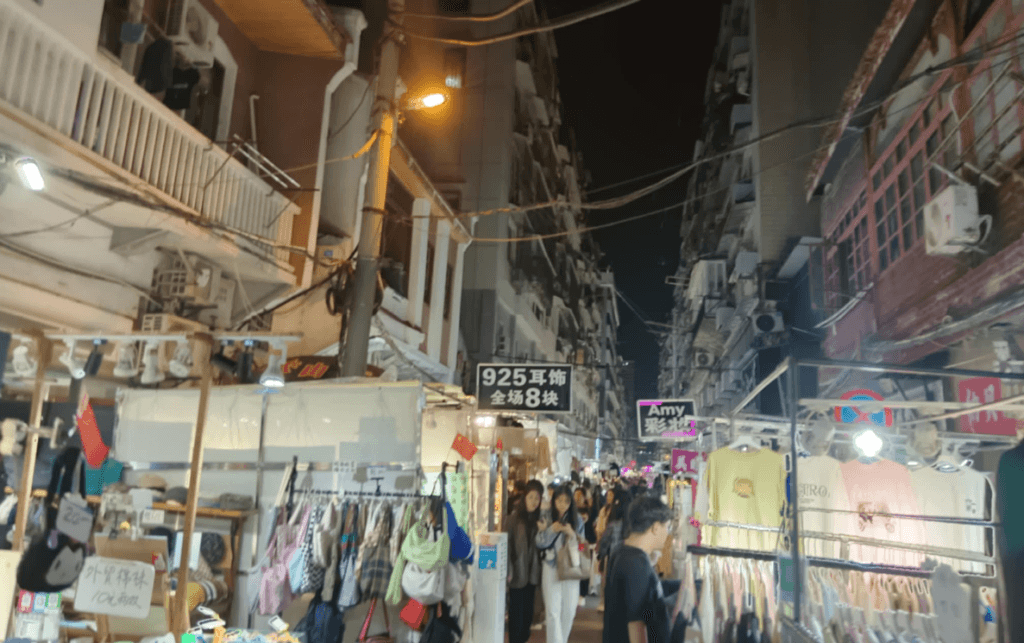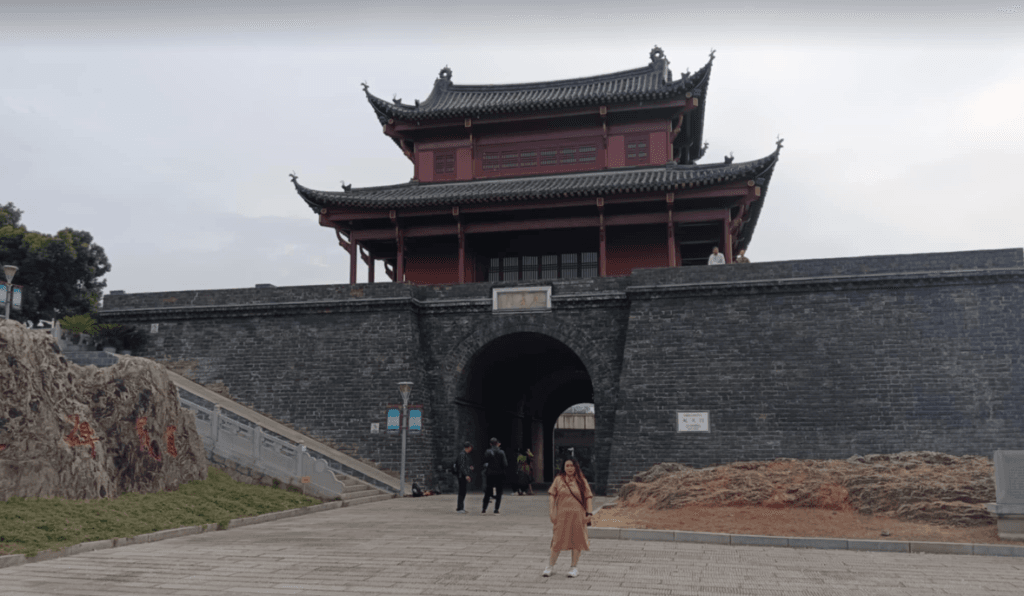When it comes to popular travel destinations, Wuhan is pretty low down on the list, especially coming out of and the stigma the city received after the pandemic. Looking to embark on a new adventure, this article explores my recent 2024 trip to Wuhan China
Overview of Wuhan
Wuhan, the capital of Hubei Province, and is one of central China’s largest cities and a major transportation hub.
It is situated at the confluence of the Yangtze and Han rivers in Central China, which has historically made it an important center for trade and commerce. Wuhan has a rich history dating back over 3,500 years, and it played a pivotal role in Chinese history during the 1911 Wuchang Uprising, which sparked the revolution that ended imperial rule in China.
The city has since evolved into a modern ‘smart city’ known for its educational institutions, technological innovation, and cultural heritage. In recent years, Wuhan has gained global attention due to its association with the COVID-19 pandemic, but it continues to be a significant city in China’s economic and historical landscape.
Getting There & Visas
Wuhan is a major Chinese city and has modern very large International Airport as-well as multiple high speed (bullet) intercity trains.
We flew into the cities ‘Wuhan Tianhe International Airport (WUH)’ on China Southern via Guangzhou. If your connection is several hours, be sure to approach the main China Southern information counter on the ground floor to ask for a Free Hotel Room!

Visa’s are typically required when visiting Mainland China and must be applied for in advance. Some countries have adopted Reciprocal Agreement’s with China and allow Visa Free Travel, such as recently Australian Passports holders getting 15 days Visa-Free.
Things to See
Yellow Crane Tower
Yellow Crane Tower, is one of China’s most renowned historical landmarks, celebrated for its cultural significance and stunning views of the Yangtze River. Originally built in the 3rd century, it has been rebuilt multiple times and stands today as a symbol of the city’s rich heritage. The current tower was built from 1981 to 1985 and stands some 51.4m high.

The tower can be climbed during the day and into the evening for a small cost (USD$10/70CNY) which grants you entry into the site. Within the tower you are greeted with historic artifacts and artwork on each floor as you progress upward.

It goes without saying the view from Yellow Crane Tower is excellent and gives you a 360 degrees view of the city including Wuhan Yangtze River Bridge. To get to the Tower you can use the ‘Line 5 – Simenkou & Yellow Crane Tower’ Metro Station.

Hubei Provincial Museum
The Hubei Provincial Museum in Wuhan is one of China’s leading museums, showcasing over 200,000 cultural relics that highlight the region’s rich history. It has both temporary and permanent exhibits including the ancient Zenghouyi Chime Bells, an set of musical instrument from the Warring States period,
One of the easiest ways to the museum is by taking the Metro to the ‘Line 8 – Hubei Provincial Museum & Hubei Daily’ Metro Station a short walk away. Entrance is free however you will need to bring your physical passports. Various Audio guides and Augmented Reality glasses are available inside.
Website: Hubei Provincial Museum
Yasunari Road Night Markets
Trying to find the Night Markets proved challenging as our Maps didn’t show any Yasunari Road on them, nor did the TripAdvior page give any detailed instructions.
Open 5PM to 11PM, the Night Markets begin outside at Xunlimen Metro Station where the Pink (Line 2) and Blue (Line 1) transfer.
The markets are ~500m or so stalls in a narrow street selling a variety of clothes, arts, phone accessories and street food snacks. Pricing is ‘ok’ and there are interesting items for sale. At the end of the market you can connect onto and explore down Jianghan Road.

Jianghan Road
Easily confused as something out of a European City, Jianghan Road is a bustling pedestrian street known for its vibrant shopping featuring International boutique Brands, good food and interesting modern architecture. Stretching a couple of km it’s very unique part of Wuhan City and a great way to spend an evening exploring.

Uprising Gate
Uprising Gate in Wuhan, also known as the Gate of Uprising, is a historic landmark commemorating the Wuchang Uprising of 1911, which marked the beginning of the revolution that led to the fall of China’s last imperial dynasty.
The gate stands as a symbol of the city’s revolutionary spirit and is an important cultural site reflecting Wuhan’s role in shaping modern Chinese history.

Inside the building above the stone gate wall is a small information centre with a model of how the Wuhan area use to look in historic times.

Wuhan Huanan Seafood Market (Closed)
The Wuhan Huanan Seafood Market, once a bustling hub for seafood and wildlife trade, gained international attention as the suspected origin of the COVID-19 outbreak in late 2019 and was permanently closed in January 2020.
While not a tourist destination, it certainly as and till this day still a globally significant location. Almost 5 years after the start of the pandemic the site is still shutdown and boarded up scheduled for re-development. Although there was very little to see, it did help provide some context and closure to where it all ‘happened/didn’t happen’ which felt surreal due to the markets being located in the middle of a major urban environment.

Practical Tips for Visiting Wuhan
Best Time To Visit Wuhan
The best time to visit Wuhan is during the spring (March to May) and autumn (September to November) months. If you visit during the Spring the blooming cherry blossoms, especially in Wuhan University and the East Lake area are worth a visit.

Weather during this time is very comfortable between 10-25c. During the winter (December to February) the temperature can dip to below freezing and in summer (June to August) above 30c which is getting on the hotter side.

Accommodation
Generally speaking Wuhan has plenty of accommodation ranging from budget backpackers to luxury hotels and is very affordable.
The phone app works in China and is well polished, has a great range of accommodation and generally seen as far superior to its direct competitors like booking.com for China.
Referral Code: TRIP.COM ($20 off first booking)

Getting Around
Getting around Wuhan is relatively straightforward if you are a confident navigator and know how to use Technology.
Navigation
The most important think to remember is ‘Google Maps is BLOCKED‘ throughout China and will not work. Baidu Maps is the recommendation for Chinese speakers, however it does not have an English Version and is pretty much unusable. We found Apple Maps the best option for navigation and appreciated its deep integration with the public transport network.


Metro
Wuhan has a world class Metro consisting of over 300 stations and 500km of track across 12 different lines. It by far is the most convenient way to explore Wuhan and is very affordable and safe.
All stations and signage in the Metro has an English translations making it very straight forward to use.
The Metro connects to the Airport ‘Wuhan Tianhe International Airport’ with trains running every ~7 minutes between 06:00 to 22:30 in weekdays and 06:30 to 22:30 in weekends. If you use Apple Maps the train timetables and optimal navigation is provided on the App which is super helpful if crossing lines and can provide helpful shortcuts across the network.

Tickets can be purchased at the station using automated machines with cash, or more conveniently you can use either the AliPay iPhone/Android and WeChat Phone App to get a virtual QR Code rail pass that links with your bank card.
Ensure you are using the latest Metro Maps as the network is expanding every day!

Remember to download these Apps before you leave as Google Play is blocked in China!
Didi
If you need to quickly get from one part of the city to the other, Didi is the Chinese ridesharing alternative to Grab or Uber. It can be accessed easily through the Alipay Super App.
Walking
Wuhan is a very easy city to walk however the city does span a considerable distance. Footpaths are generally clean and well maintained, Crossings are respected and most street signs have an English Translation

Practical Tips
Language Barrier
Sadly Wuhan is not very tourist friendly when it comes to foreigners visiting the city. While a considerable effort has been made to add English as a second language on most official signage, it is very rare to find another English Speaker if you run into trouble. Even at tourist attractions you will be following hand signals on where to go. This is understandable as non-Chinese tourists are a very rare sight in Wuhan with us only seeing 5-6 foreigners during our week long visit.
Payment
China is quite a unique place when it comes to payments as the expectation is that most transactions are going to be made through the ‘Ali Pay’ and ‘WeChat’, be that ordering food at a restaurant, purchasing something from a store or buying a ticket. Most stores we encountered did not card readers or the facilities to accept a credit/debit card directly.
Both applications are available for foreigners, have English Translations and are straight forward to use however some linked International bank cards refused to operate with some stores.
Cash is still generally and reluctantly accepted with it always being a good backup to have. ATM’s do exist however are less common than you’d expect and compared to other countries.
Toilets
Toiletry differences and needs are often assumed to be universal, and can have catastrophic consequences when they differ. At-least in Wuhan, and like elsewhere in China, ‘Squat Toilets’ are what you are most likely to find in public and at your hotel. Bring your own toilet paper as its often not provided!
Strict Internet Censorship
One of the most frustrating parts of visiting China is the ‘Great Firewall Of China’ which blocks most Western Internet services such as Google (Search, Maps, Translate, Gmail etc), Facebook, YouTube, Reddit, Western News, Messaging (Telegram, Line, Messenger, WhatsApp) and most VPN’s. Do not under estimate the impact of this!
The most effective way to legally circumvent this to get unfiltered internet is to use ‘International Roaming’ on your phone prior to leaving. Be aware of excess usage usage! Alternatively you can explore VPN’s however you’re mileage may vary as they are often proactively blocked.
Wrap up
Wuhan was a surprising place to visit which blew away all my own pre-conceived ideas of what Wuhan would be or how a non touristy Chinese city would function. While far from a beginner level city to explore, we really enjoyed our adventures to China and it gave a positive new outlook on China.